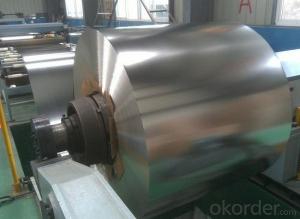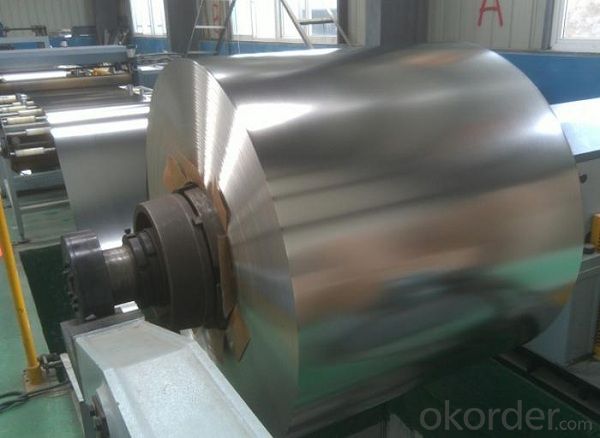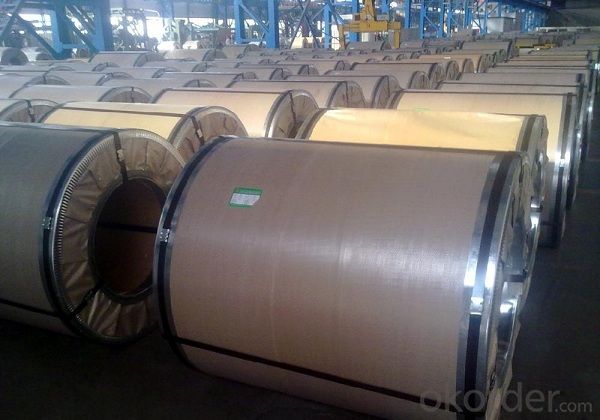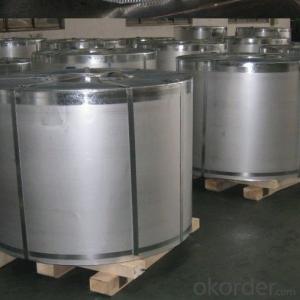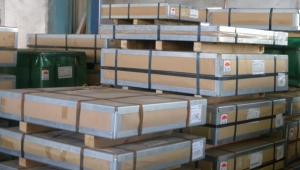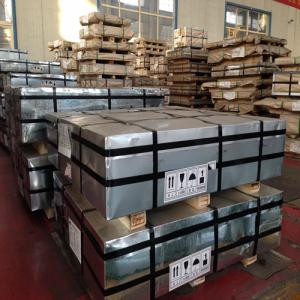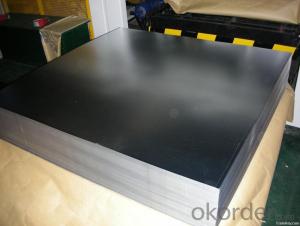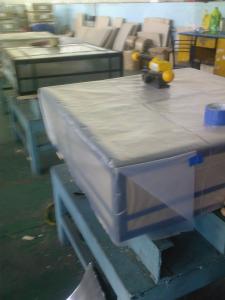Electric Tinplate coil and sheet for sales
- Loading Port:
- Tianjin
- Payment Terms:
- TT OR LC
- Min Order Qty:
- 25 m.t.
- Supply Capability:
- 40900 m.t./month
OKorder Service Pledge
OKorder Financial Service
You Might Also Like
Prime Quality Tinplate Sheets Details
1.Structure of Description
Electrolytic Tinplate Sheets is one of the metal packing materials, which is widely used for making painting cans ,chemical package cans , electrical cable ,battery and metal printing etc. For caps, there are some customers also need TFS, if you have some demand for TFS,also can contact with us.
2. Main Features
Steady and high quality
Fast shipment
Good experience for export work
For the surface, Plate uniform in thickness,uniform and smooth tin coating, without flaws,rusts,scratch,wave,nick of tin coating etc.
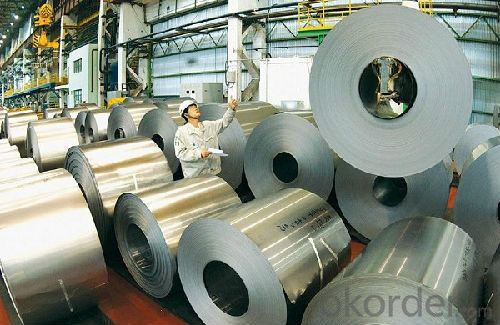
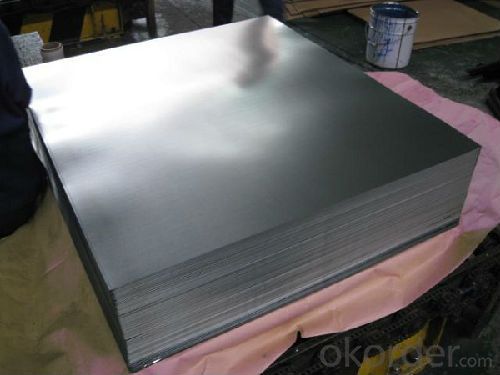
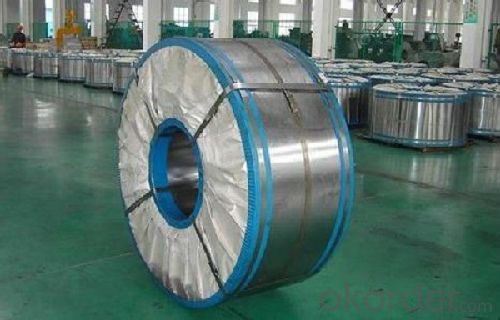
Minumum Order Quantity: 25 MT Loading Port:China Main Port
Annual Capacity: 400,000MT Payment Terms:TT or LC
Product Specifications:
Prime Quality Tinplate Sheets Usage and Applications
Prime Quality Tinplate Sheets Specifications
Standard : GB2520-2000 ,JIS G3303
Steel type : SPCC
Coating : 2.8/2.8
Surface: Bright, Stone ,
Thickness:0.18
Width :600MM~1000MM
Temper : T1~T5
Package: tinplate wrapped completely with an inner cover of plastic or waterproof papers with vorners protected with metal angels.
Applications
Chemicals and painting cans
Dry food cans, such as fancy cans, biscuit cans, milk power cans, tea cans
Liquid food cans, such as edible oil cans, beverage cans, Tomato paste cans
Sea food cans
Crown corks, easy open ends(EOE)
Electrical machinery parts
Bakeware and household kitchen parts
FAQ
A. What is the package of tinplate? (Referred as below)
For sheets, thin plastic film + rust-proof paper + metallic cover + metallic angles+ steel band strips + fumigated wooden pallet.
For coil, thin plastic film + rust proof paper + metallic cover + steel band strips + fumigated wooden pallet
B. The surface of tinplate could you supply?
Stone finish, Bright finish, Matte finish, Silver finish
- Q: What are the different ways to label tinplate packaging?
- There are several different ways to label tinplate packaging, including using adhesive labels, direct printing on the tinplate, embossing or debossing the packaging, applying heat transfer labels, or using shrink sleeve labeling.
- Q: What are the common widths of tinplate?
- The common widths of tinplate typically range from 600mm to 1200mm.
- Q: What are the typical manufacturing processes for tinplate products?
- The typical manufacturing processes for tinplate products include coil preparation, coil cleaning, annealing, coating, temper rolling, cutting, and forming.
- Q: How does tinplate contribute to the overall tamper-evident packaging?
- Tinplate contributes to tamper-evident packaging by providing a durable and secure material that is difficult to tamper with. Its strength and rigidity make it resistant to punctures or tears, ensuring that the packaging remains intact until it reaches the consumer. Additionally, tinplate can be sealed tightly, preventing unauthorized access and providing a visible sign of tampering if the seal is broken. Overall, tinplate enhances the safety and integrity of tamper-evident packaging, giving consumers confidence in the quality and authenticity of the product.
- Q: How does tinplate perform in terms of stackability?
- Tinplate performs well in terms of stackability due to its rigid and durable nature. Its flat surface and uniform thickness allow for easy stacking and stability, making it suitable for various storage and transportation applications.
- Q: How to test the tightness of tin metal cans?
- Pressure leakage test with a rubber plug when empty hole plugged, start the air compressor, slowly open the valve, the pressure in the tank is increased gradually, while the empty tank is immersed in the water tank, careful observation with outer bottom cover curling and welding seam has no air bubbles, until the pressure rose to 0.7jg/cm and 2min. All the same parts of continuous bubbles, should be judged as leakage, leakage of the recording time and pressure, and mark in the leak site on.
- Q: How does tinplate packaging contribute to product shelf life?
- Tinplate packaging contributes to product shelf life by providing a durable and protective barrier against external factors such as moisture, oxygen, light, and temperature fluctuations. This helps to prevent spoilage, retain product freshness, and extend the overall shelf life of the packaged goods. Additionally, tinplate packaging is resistant to corrosion, ensuring the integrity of the packaging throughout the product's shelf life.
- Q: What are the industry standards for tinplate?
- The industry standards for tinplate typically include specifications regarding the thickness, coating weight, surface finish, and mechanical properties of the tinplate. These standards ensure that tinplate meets the required quality and performance criteria in various industries, such as packaging, automotive, and electronics.
- Q: Should vacuum filling be required for tinplate meat filling?
- If the plastic bag type must be vacuum, if it is not available, it should be high temperature antivirus
- Q: How does tinplate compare to aluminum in terms of properties and applications?
- Tinplate and aluminum have distinct properties and applications. Tinplate is steel coated with a thin layer of tin, making it corrosion-resistant, ductile, and easily solderable. It is commonly used for food and beverage packaging, as well as in construction and automotive industries. On the other hand, aluminum is lightweight, non-corrosive, and possesses high thermal and electrical conductivity. It finds extensive use in aerospace, electrical, and packaging industries due to its strength and recyclability. While tinplate offers better barrier properties, aluminum excels in weight reduction and energy efficiency. Hence, the choice between the two depends on specific needs and requirements.
Send your message to us
Electric Tinplate coil and sheet for sales
- Loading Port:
- Tianjin
- Payment Terms:
- TT OR LC
- Min Order Qty:
- 25 m.t.
- Supply Capability:
- 40900 m.t./month
OKorder Service Pledge
OKorder Financial Service
Similar products
Hot products
Hot Searches
Related keywords
